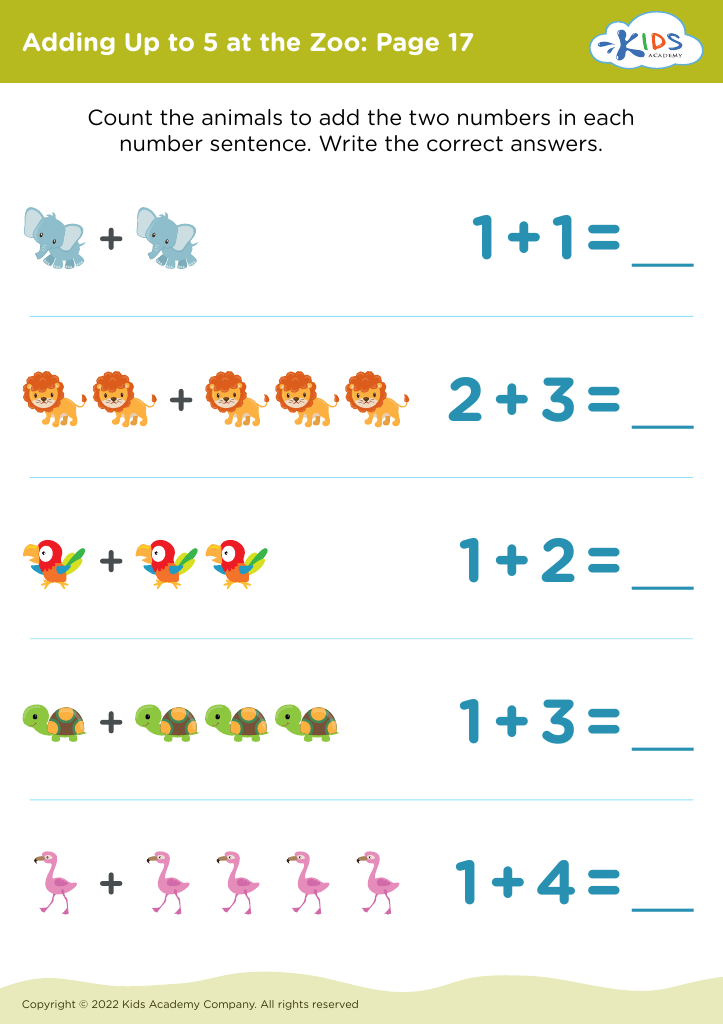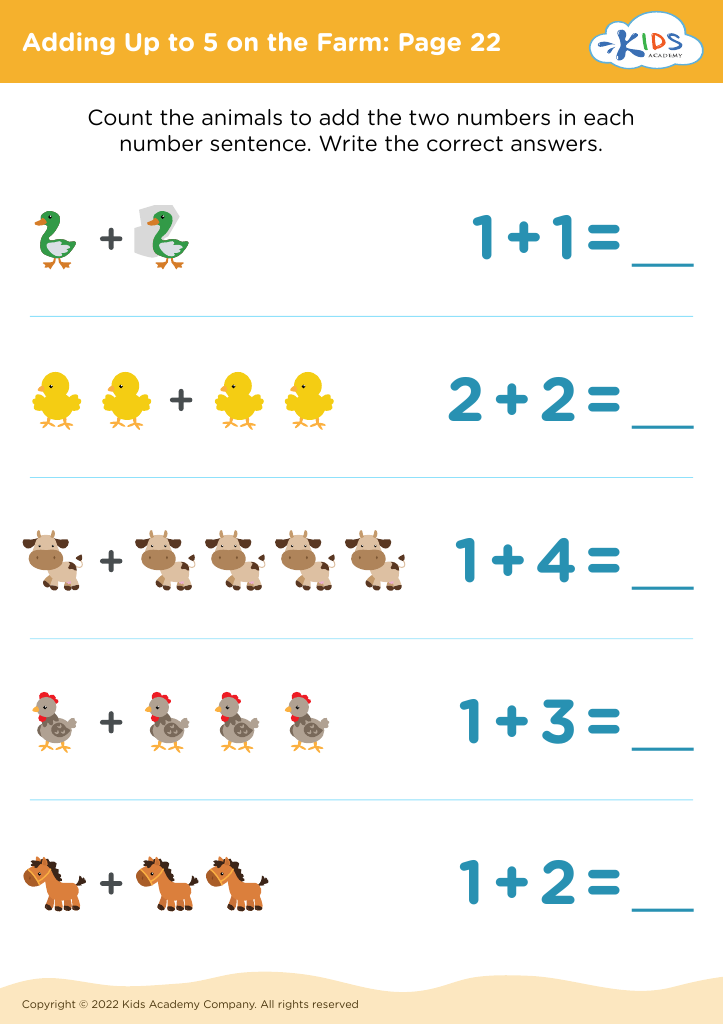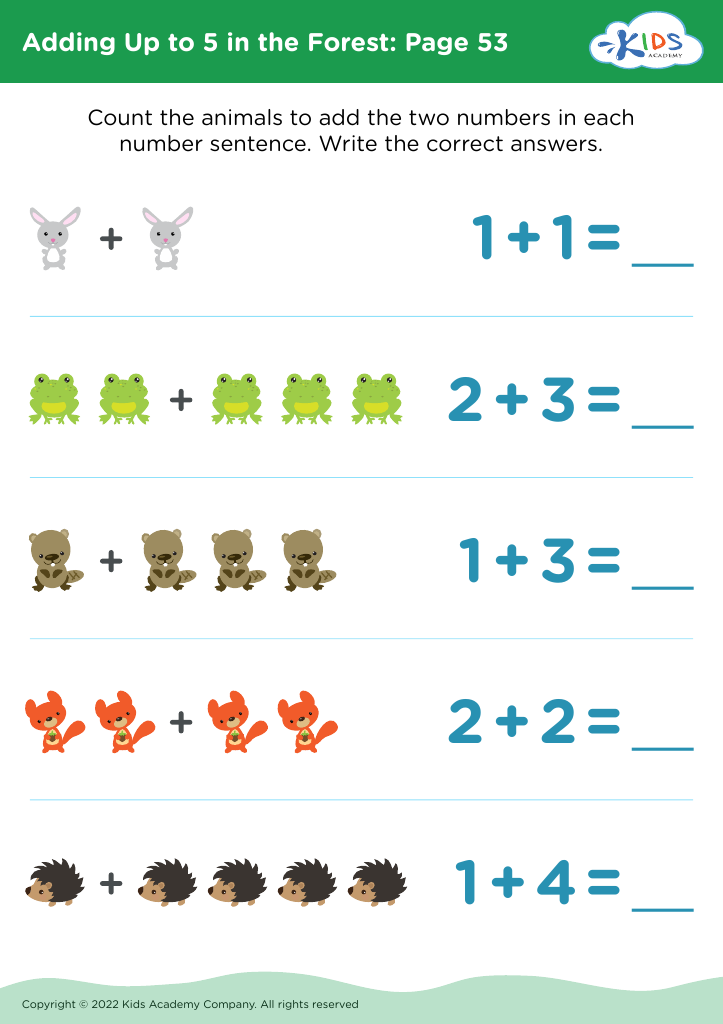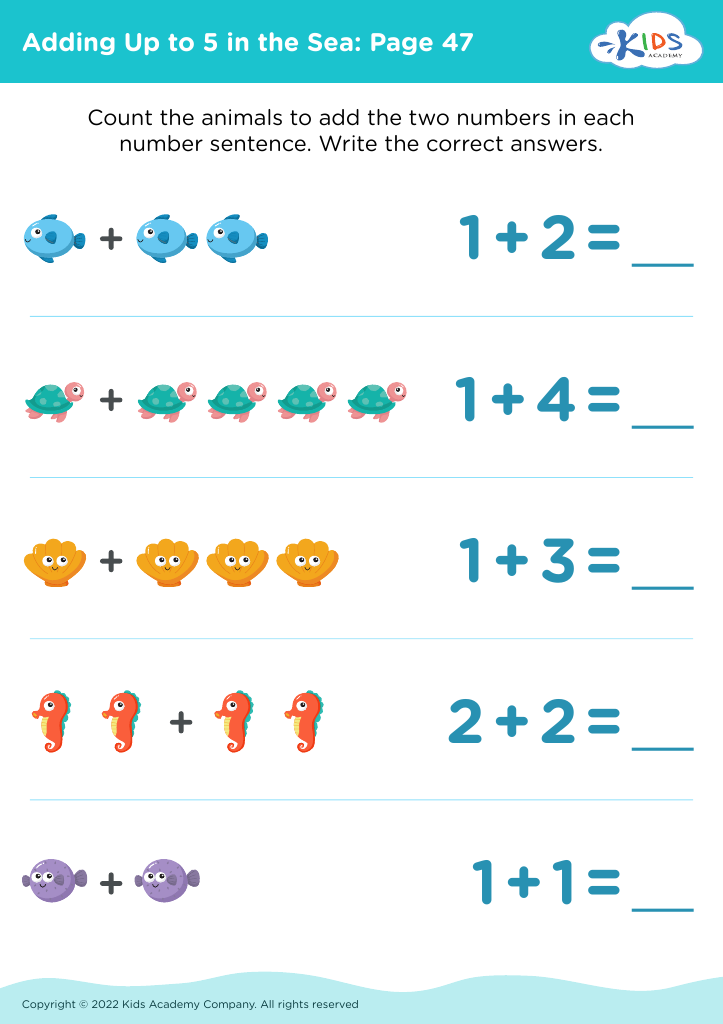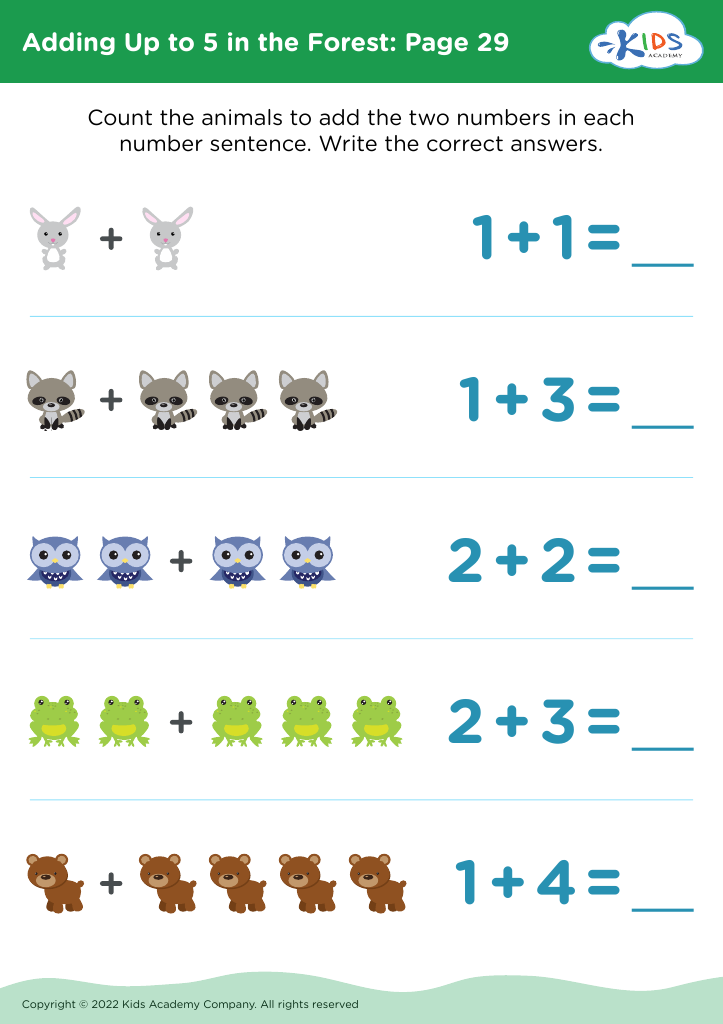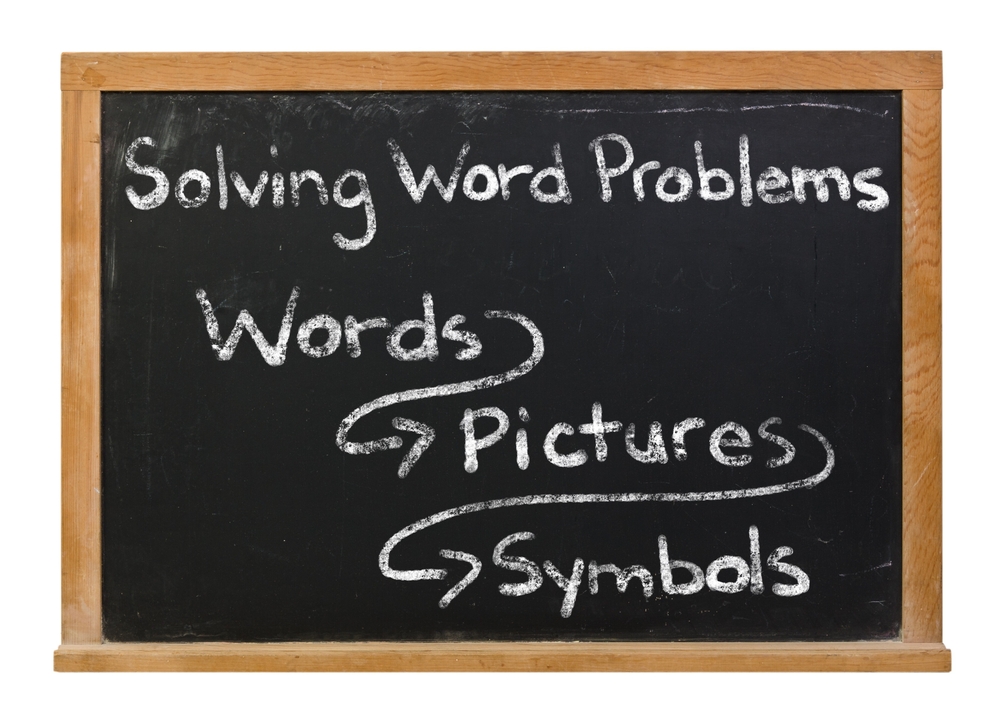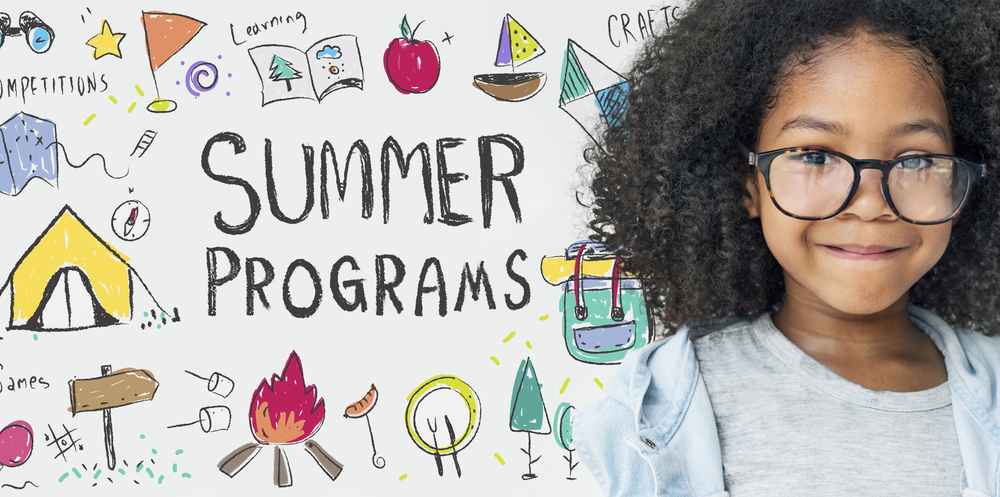Counting proficiency Addition & Subtraction Worksheets for Ages 3-9
11 filtered results
-
From - To
Boost your child's math skills with our Counting Proficiency Addition & Subtraction Worksheets designed for ages 3-9! These engaging and interactive worksheets help young learners master counting through fun exercises that reinforce foundational math concepts. As your child explores addition and subtraction, they'll develop confidence and skills vital for future learning. Our carefully crafted activities cater to different learning styles, ensuring that every child can thrive. Whether at home or in the classroom, these worksheets offer an enjoyable way to enhance your child's mathematical abilities. Start your child's journey to numeracy success today with our vibrant and accessible worksheets!


Adding Up with Old MacDonald Worksheet
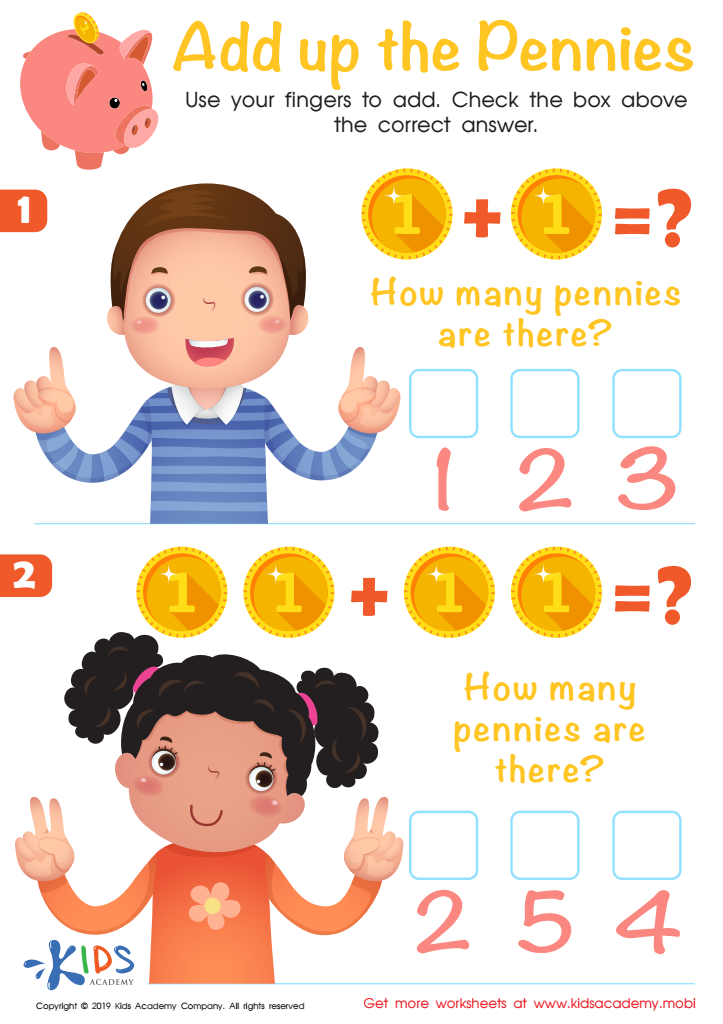

Add up the Pennies Worksheet
Counting proficiency, particularly in addition and subtraction, is essential for children aged 3-9 as it serves as a fundamental building block for all future math skills. During these formative years, children not only learn to understand numbers but also develop critical thinking and problem-solving abilities. Proficient counting helps children grasp essential concepts such as quantity, value, and relationships between numbers.
Parents and teachers should care about fostering counting proficiency because it positively impacts children's academic success. A solid foundation in addition and subtraction builds confidence and encourages a positive attitude towards math. Early mastery of these skills also supports literacy development, as many mathematical concepts overlap with language comprehension.
Moreover, proficiency in counting and basic arithmetic lays the groundwork for more complex subjects like geometry and algebra in later schooling. Engaging children in counting and simple mathematics through games and everyday activities promotes holistic development and cognitive skills.
Additionally, instilling a strong counting competency at a young age prepares children for real-life applications that extend beyond the classroom, such as budgeting, cooking, and time management. By prioritizing these skills, parents and teachers equip children for a balanced educational journey and lifelong learning.
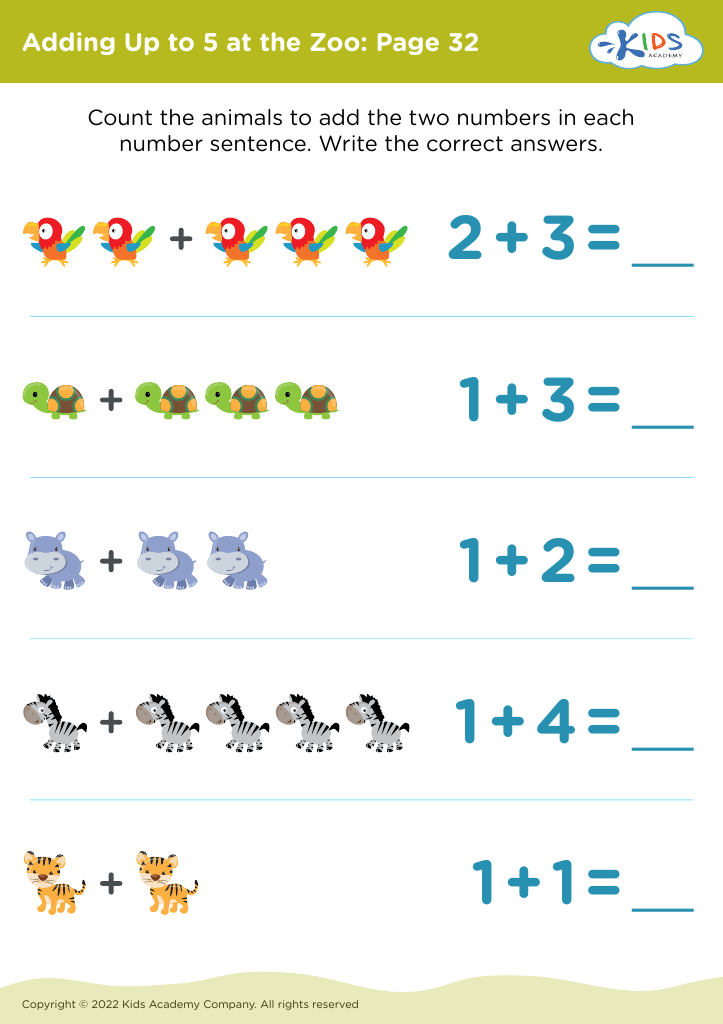

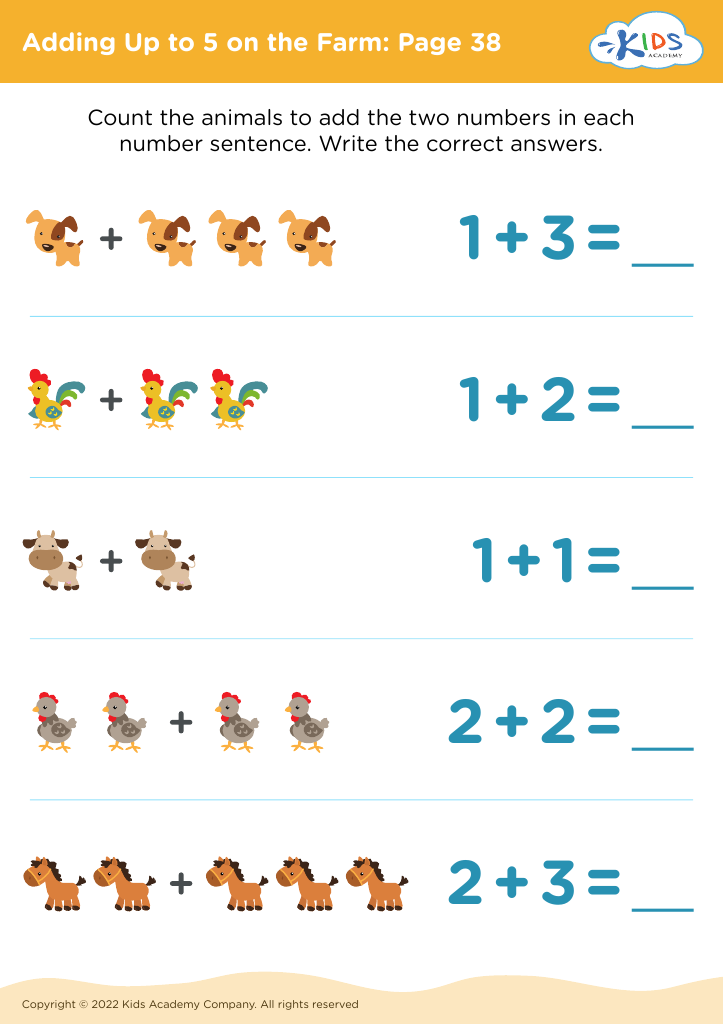
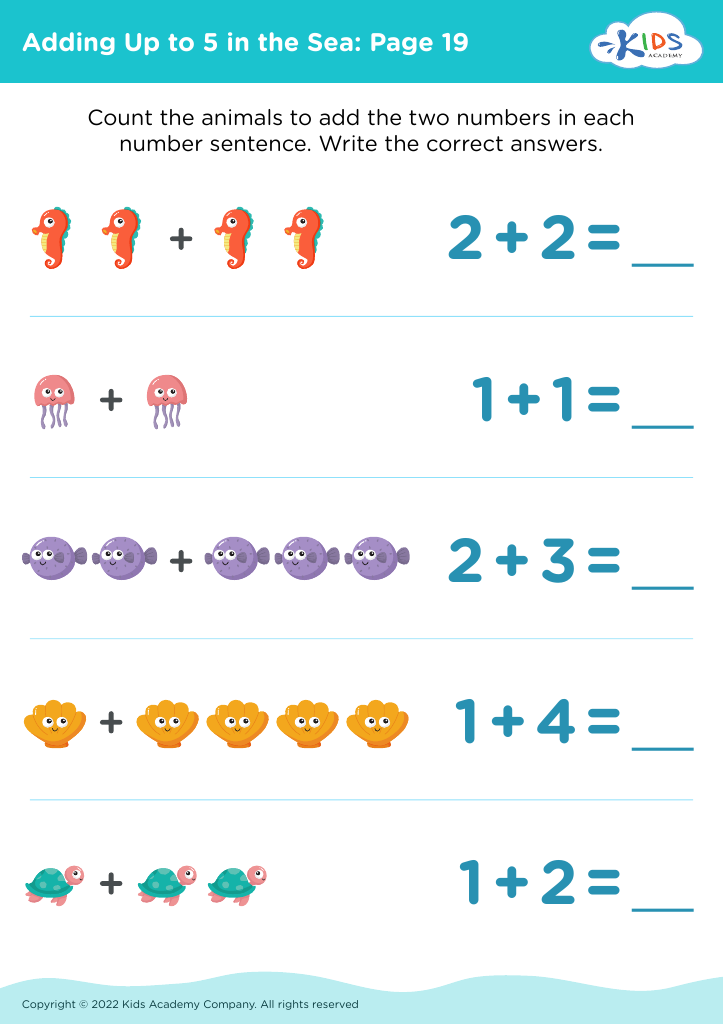
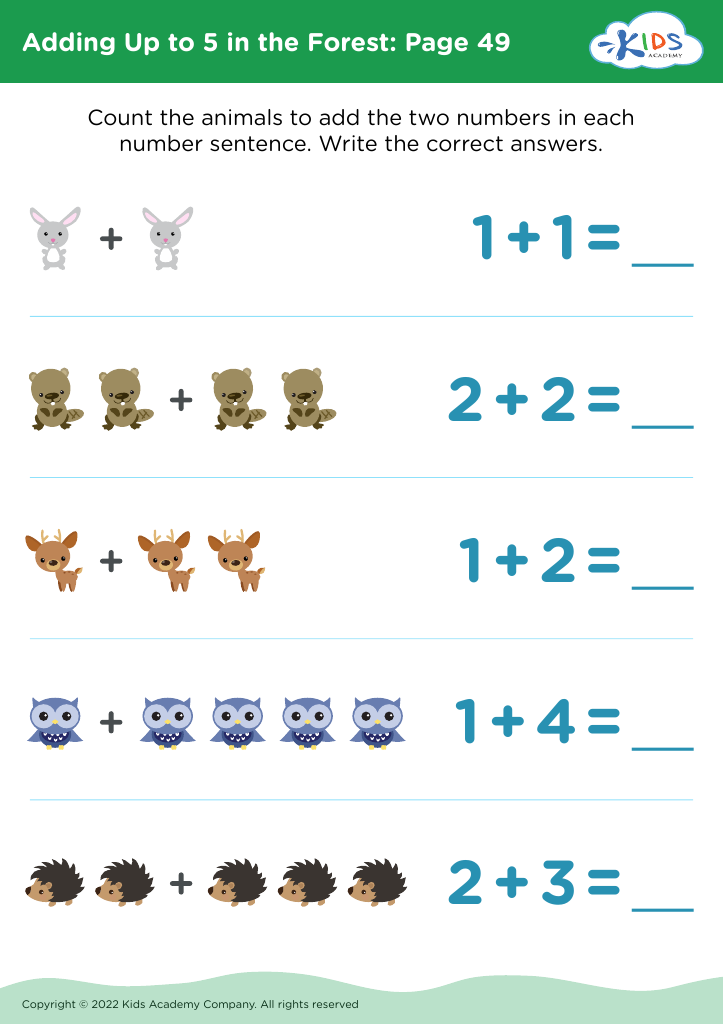
 Assign to My Students
Assign to My Students

